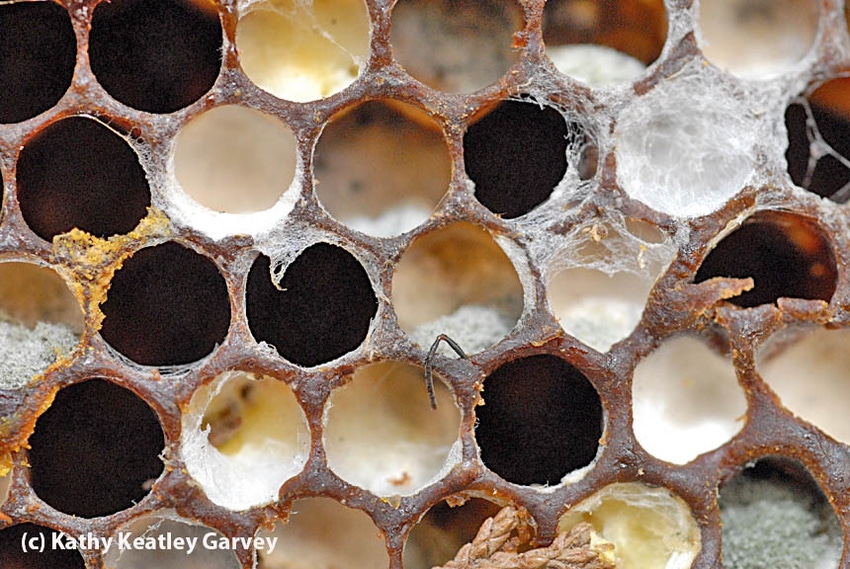June 25, 2013

Honey bees are in trouble. They are dying in record numbers.
That's why you should watch "Blossom Buddies," a two-part video segment in the Growing California series, produced by the California Department of Food and Agriculture in partnership with California Grown.
The two-part series explores the honey bee's contributions to California agriculture, their declining population, and why we should be concerned about bee health. California has 800,000 acres of almonds, and each acre requires two hives for pollination. That's 1.6 million colonies. Since California has only 500,000 colonies available for almond pollination, the rest must be trucked here from throughout the country. This means, as the video relates, "the largest annual bee migration in the world" takes place in California during almond pollination season, which begins around Valentine's Day.
In Part 2 of the series, Extension apiculturist Eric Mussen of the UC Davis Department of Entomology and Nematology, says that about 20 percent of beekeepers in California, as well as throughout the nation, "are suffering significant losses of honey bee populations that we can't explain."
The video series includes interviews with migratory beekeeper John Miller, almond grower/commercial queen breeder Dan Cummings, and Christi Heintz, executive director of Project Apis m. (That stands for Apis mellifera, the scientific name of the honey bee.)
The footage zeroes in on California almond orchards in bloom, beekeepers tending their bees, bees foraging, and Mussen working in the bee lab at the Harry H. Laidlaw Jr. Honey Bee Research Facility, UC Davis. The series also includes several photos from the UC Davis Department of Entomology and Nematology. Who could forget the look of colony collapse disorder, of a bee antenna poking through a cell of an abandoned frame? Or the blood-sucking varroa mite--the No. 1 enemy of beekeepers--sucking blood from a forager (worker bee) nectaring lavender? Or a mite draining blood from a drone pupa?
You can see Part 1 of the video and Part 2 of the video on the CDFA blog, "Planting Seeds."
Or you can access Part 1 on YouTube at:
http://www.youtube.com/watch?feature=player_embedded&v=ZS-jbIEsRYg
And Part 2 on YouTube at:
http://www.youtube.com/watch?v=ur1ZFj22K94
It's well-done production that looks at the challenges we face with our declining bee population and the crippling health issues that our bees face.
More from Western Farm Press
Oregon GMO mystery wheat is a whodunit
What a grocery store without honey bees looks like
EPA’s Pinocchio nose grows with farmer privacy scandal
5 lessons from the Honeygate scandal
You May Also Like




